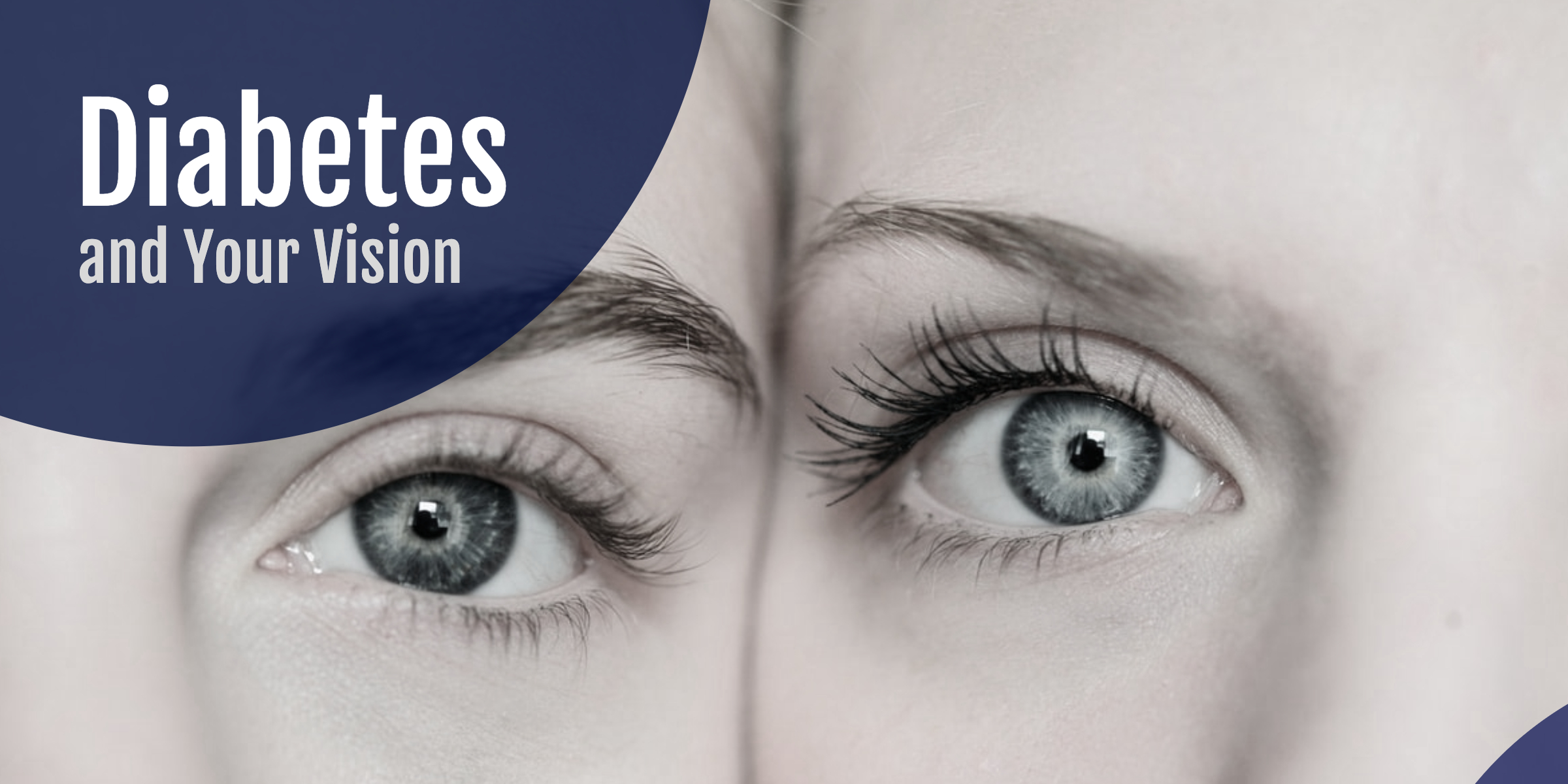
Having diabetes comes with many challenges to your health, but did you know your vision can also be negatively impacted by diabetes? There are a few diseases of the eye that are more likely to occur in people with diabetes as a result of it. In this article we will be discussing those diseases, what can be done to help prevent them, and discuss what treatment options are currently available.
Diabetic Retinopathy
Diabetic retinopathy is a disease of the eye, specifically the retina, that can cause vision loss and blindness in people with diabetes. The retina is the part of the eye that senses light and acts as a camera lens allowing you to see the world. The retina catches the light and sends the information to your brain through your optic nerve.
Diabetes damages your body’s blood vessels and the ones in your eyes. These damaged blood vessels can bleed or leak fluid into the vitreous (the jelly-like fluid in your eyeball) of your eye and cause you to see spots or cobweb-like effects. Over time, your body will try to grow new blood vessels to support or replace the damaged ones but they too will ultimately also bleed and leak, leading to blindness.
Diabetic retinopathy is the most common eye disease associated with diabetes. Therefore if you have diabetes, it’s crucially important to have annual eye exams to check for signs of it. Other ways to help prevent diabetic retinopathy are to properly manage your diabetes, lower your blood pressure and cholesterol, and to stop using tobacco products.
Advancements in technology over the years have made diabetic retinopathy a very treatable condition. Medications called VEGF inhibitors can slow down the advancement of diabetic retinopathy and in some cases even reverse it. Laser therapy can also be used to create a barrier of scar tissue that slows the growth of new blood vessels and reduces bleeding and leakage. Corticosteroid injections can also be used to slow down or halt diabetic retinopathy. Consult with your ophthalmologist to find out what solution would be best for you.
Complications from Diabetic Retinopathy
Diabetic retinopathy can also lead to the following diseases that can also threaten your vision:
Glaucoma
The buildup of new blood vessels can interfere with the normal drainage of your eyes and create pressure which damages your optic nerve and can lead to blindness.
Diabetic Macular Edema
Approximately 1 in 15 people with diabetes will develop diabetic macular edema (DME). DME occurs when blood vessels in the retina bleed or leak fluid into your eye’s macula, the part of the retina responsible for clear, sharp vision. While it does not cause blindness, it will cause blurry vision.
Retinal Detachment
Diabetic retinopathy causes scarring of the back of the eye and over time the scars can pull the retina away, resulting in what is called tractional retinal detachment. The longer it goes untreated, the higher the risk of having permanent vision loss. Retinal detachment is an emergency scenario and should be treated at once.
Cataracts
Cataracts are a clouding of your eye’s lens, which is usually clear. Clouding of the lens happens naturally over time, but being diabetic greatly increases your risk of developing cataracts. Diabetics are at risk of developing cataracts at an earlier age, and also by a rate of two to five times that of non-diabetics. High blood pressure, obesity, sun exposure, and smoking can all contribute to cataract formation even earlier. Cataracts are easily treatable with minimally invasive outpatient surgery.
Open Angle Glaucoma
Open-angle glaucoma (OAG) is the most common form of glaucoma, affecting approximately four million people in the U.S., many without knowing they even have it. Approximately one-third of all glaucoma cases are due to diabetes. The symptoms of OAG progress very slowly, until they finally manifest once the disease has advanced. Symptoms include blurry or patchy spots in your peripheral or central vision.
In very advanced OAG, tunnel vision is common. OAG occurs when the angle at which your iris and cornea meet is normal, healthy, and wide-open. Your eye’s drainage canals become blocked or clogged and prevent proper drainage, which in turn increases pressure in your eye and causes damage to your optic nerve. Having regular eye exams will help identify OAG as early as possible and reduce long-term damage to your vision.
Glaucoma can usually be easily treated with prescription eye drops to reduce pressure in your eye. Laser surgery can also be used to drain fluid from your eyes and reduce pressure. Laser surgery can be done quickly and easily right at your ophthalmologist’s office. If either of these treatments are not effective, your ophthalmologist may recommend surgery.
Speak with an Ophthalmologist
If you or a loved one are experiencing symptoms of diabetic retinopathy, glaucoma, cataracts, or any other diabetes-related eye diseases, our highly trained specialists are waiting to assist. Call one of our convenient locations at 844-485-3202 or click here to make an appointment online.
